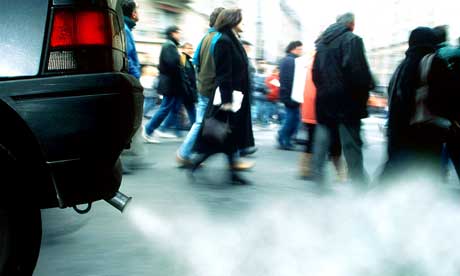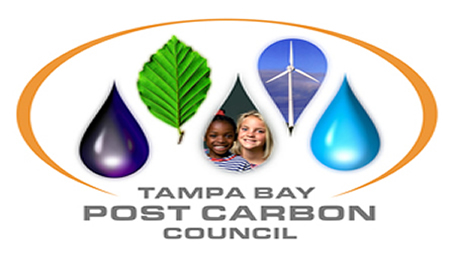How
You can
Make a difference!
Suggestions on what you can do to promote a sustainable
life while reducing greenhouse gasses and the impact of Peak oil.
From the
TAMPA BAY POST CARBON COUNCIL
Become
educated about sustainability, then become an educator: teach your children,
and talk to your friends, neighbors and total strangers about it at every
opportunity.
Develop an “Energy Awareness Mind set”
that understands that everything we do requires energy, and that energy
waste is a crime against the planet and human societies.
With an Energy Awareness Mindset you will be constantly aware of how your
life activities consume energy in many forms, and you will become attuned
to the moral need to conserve energy as often as possible.
Learn what energy is and where it comes from. Learn
that everything that happens on earth requires energy, and that energy
use always gives off heat and produces some form of byproduct (CO2,
sweat, etc.). Making something, using it, and disposing of it all require
energy and produce heat and possible harmful byproducts.
Learn how energy flows and how it works in a modern
urban environment. Learn to think in a broad context about energy; for
example, learn to think about how much energy was used to make something
you are about to use or throw away, and how much energy is used to replace
it.
Seek the most effective way of reaching your goals while using the least
amount of energy. When possible, use your own muscle energy rather than
machine energy

Greendex Calculator
How well would YOU do?
Figure out how sustainable your own behavior is.

Determine your personal and family “carbon footprint,”
(see below) and resolve to reduce it as much as possible. Encourage
others to do so. Support the reduction of population growth globally.
Resolve
to work to create a better life for those who are alive, but to limit
births to a global level at which human consumption patterns do minimal
harm to the biosphere on which we all depend. Reduce your per capita
consumption
Think globally (with a broad, global perspective), but buy and work locally.
Be vocal in your support of conservation of all kinds.
Be vocal in our opposition to waste in any form.
Be vocal in your support of a new social paradigm that promotes conservation
and sustainability.
Be vocal in your support of a new economic model that doesn’t
reward growth for growth’s sake, but rather rewards sustainability
and respect for both the earth and the rights of others to enjoy a full
life.
Develop a mind set that looks for the real value in the things you own
and the way you spend your time. Avoid being tempted to “upgrade”
your lifestyle or belongings simply because they are older or out of
style.
TRANSPORTATION
One third of the CO2 we produce results from the
transportation of people or goods. The average car produces 1 lb of
CO2 per mile, or roughly 20 lbs for each gallon of gas.
10% of the fuel we produce from petroleum is used to create jet fuel
to power airliners.
Move out of the suburbs and nearer the urban core,
where you will have those commodities you need closer at hand, and where,
when you need it, you can take advantage of whatever mass transportation
is available.
Live where you can drive less, as close as possible
to where you work, shop, play and where your kids go to school
Car pool when ever possible. See this site
for more.
Resolve to remain as aware as possible of new forms
of transportation and vehicle fuels as they become available, and to,
when possible, select the most energy efficient form as your primary
mode of transport. This includes newly emerging vehicle technologies
such as hybrid cars, (Toyota, was first, but most other car manufacturers
now off extensive lines of Hybrids), motor scooters, electric cars,
Segway personal mobility vehicles (check out Segway’s new “Centaur
Concept” vehicle), very small cars (Smart4Two), vehicles that
run on compressed air (Tata’s air car), extremely low-drag vehicles
(Aptera), etc.
Walk or ride a bike when practical, carpool as often
as possible (at least once a week), or use mass transit.
Try to observe one or two “no car use” days each week.
Intentionally plan trips in your car or on public transportation to
get as much done as possible on each trip.
Think twice before purchasing a new car: Before it’s bought, a
new car adds 4 tons of carbon & 700 lbs. of air pollution.
Choose a fuel efficient, low emission car. Keep your car’s tires
properly inflated to maximize fuel economy. 2 million gallons of gas
is wasted each day due to people driving on under-inflated tires. Look
into transitioning to new wheel technologies, such as Michelin’s
soon to be available “Tweel,” which requires no air at all.

Keep your car properly tuned up.
Replace your car’s air and fuel filters at recommended
intervals
Remove roof racks, excess weight from the trunk, or
heavy wheels, driving slower and avoiding quick starts and stops can
increase fuel efficiency as much as 25%. Drive the speed limit, or less.
Avoid idling as much as possible. Idling just ten minutes a day pumps
500 lbs of CO2 into the atmosphere.
Count how many stop lights, train tracks, school lines
and drive thru’s you sit at during a normal day. Calculate your
average weekly idle time, then try to reduce it by driving a different
route, park, avoid rush hour, or shutting off the engine when you think
you’ll need to idle more than a minute (be prepared to buy a new
starter more frequently, however)
Try to stop at traffic lights as seldom as possible
by slowing down well in advance when a light ahead is red.
Try to never let your car come to a complete stop (except at stop signs,
of course). Of course, if you own a hybrid, most of the forgoing does
not apply, as the vehicle will automatically use the most efficient
functions. More car efficiency tips
here (AD)
AT
HOME
You may also want
to check out our home energy page Here.
Choose your home carefully: is it energy efficient
and the right size for your needs? If possible, choose an electrical
supplier who offers renewable energy like wind, solar or water.
If you’re building a new home, try to site it where the shade
of evergreen trees (Southern Live Oak, for example) will help keep it
cool in summer. If possible, orient the home for minimal exposure to
the direct sun. If you’re building a new home, research energy-conserving
building technologies that might be appropriate before you start designing
it, and incorporate as many of these as you can afford. Consider incorporating
wind-solar-water-based energy sources where you can. Work with architects
and engineers who know and are appreciative of energy conservation practices.
Don’t build in a flood zone. Rebuilding flooded
structures wastes an incredible amount of energy.
Participate in your electric company’s renewable
energy program, or ask why they don’t have one.
Raise your air conditioning temp; lower your heating
temp
Heating and cooling your home accounts for 45% of your home’s
energy use. You save about 7% in costs for each degree F you lower temps
in winter or raise in summer.
Install and use “Energy Star” ceiling fans in rooms where
you spend most of your time Clean or replace your air conditioner’s
filters monthly.
Conserve energy by monthly cleaning the coils on your
refrigerator and freezer with a specially designed coil brush.
Reduce the temperature setting on your hot water heater
and turn it off when it’s not needed. Use hot water sparingly.
Alternatively, tankless heaters supply water on demand and are much
more efficient.
Install “Low Flow” shower heads to conserve both water and
the energy to heat it. Take “Navy” showers: turn the water
on only to get wet and to rinse off. Try to limit showers to no longer
than 5 minutes.
Wash clothes in full loads only, at
temperatures of cold or warm, not hot. Use “Cold Water All”
or similar detergents.
Don’t use your clothes dryer often; hang clothes on a clothes
line where possible. Use the least amount of time to wash and dry clothes.
Select the water level setting appropriate to the amount of clothing
you’re washing.
Wash dishes only when you have a full load. Conserve
energy by hand-drying dishes once they’re clean. Install energy-efficient
lighting and appliances.
Use LED's, CFL's or fluorescent tubes instead of incandescent.
Use low wattage high "lumen" bulbs. Don’t spend money
and waste energy lighting a room with no one in it. Develop a mind set
to avoid turning on lights when you enter or work in a room that already
has adequate ambient lighting for your task.
Decrease “standby” electrical use by unplugging
your computer, peripherals, TV, printers, electronic gadgets, digital
clocks, etc., when not in use. But remember, some settings may dissappear
after a certain time without power.
Reduce waste. We throw out 4.5 lbs of trash per person
every day! How many garbage cans does your family fill up each week?
27% of America’s garbage is food. Recycle everything you can.
Be as inventive in finding uses for “discardable” items
as you can. It’s fun!
Recycling 1 plastic bottle saves the energy of lighting
a 100 watt bulb for 4 hours, 1 aluminum can powers a TV
for 3 hours. If your municipality doesn’t recycle - pester till
they do. Ask your boss and your child’s school to recycle.
4 million tons of office paper is discarded every year. If it had been
recycled paper, 1.25 million fewer tons of CO2 would have clogged the
atmosphere last year. Buy recycled. Help create an increasing demand
for recycled goods: paper, towels, napkins, toilet paper, paper plates,
etc. Use washable rags instead of paper towels. Use organic cleaners,
such as vinegar or baking soda. Use fallen leaves rather than commercial
mulch. Reduce the amount of lawn area in your home landscaping. Instead,
use ground cover plants that are drought tolerant and require little
fertilizing.
Plant native Florida species rather than cultivated
varieties. All cultivated plants were weeds at one time; think about
it!
Reserve part of your yard to grow vegetables. Use as little fertilizer
and pesticide as possible.
FOOD
Eat lower on the food chain so less energy is wasted
in growing the food you eat.
Eat your own, or locally grown fruits and vegetables frequently
Eat less meat. The average household of 2.7 people consumes 8.9 lbs.
of meat, pork and chicken each month.
Eating less beef also saves one of our most precious resource, trees
that turn CO2 into the oxygen we breathe. In South America, rain forests
are being cut down at a horrendous rate to create grazing pastures.
The meat of the cows is sold in the U.S. to make hamburgers at McDonalds,
Burger King, etc.
Raising cattle uses a lot of water. If you cut down your red meat intake
to just two 5 oz. portions each week, your contribution will save 5,283
gallons of fresh water every year.
Write your congressman and business leaders to press
for conservation and sustainability.
AT
WORK
Negotiate with your employer to allow you to work from
home as often as practicable, if your job allows it. Within your company,
develop an active sustainability persona. Encourage fellow workers to
learn more about sustainability.
Within your company, lobby for a real reduction in corporate travel.
Ask management to investigate and use emerging technologies that allow
for real-time conferencing from wide-spread locations, such as Cisco’s
“Telepresence” system, or the less expensive “Yugma”
system.
Lobby within your company to conserve energy; at work,
promote the formation of a Sustainability Department, and actively look
for ways your company can become more sustainable and thus remain a
viable enterprise.
Put up Sustainability Suggestion Boxes around the office. Don’t
waste paper. Set narrow margins on all documents that are not intended
to be sent out to others.
Use the backs of all sheets to take notes, print rough
drafts, etc.
Use the economy ink setting on your printer to print draft copies.
Shut down your computer when it’s not in use:
when you go to lunch, and when you go home in the evening.
Use the Energy Star setting on your computer to blank out your monitor
when you’re not actually working on it.
Archive documents as PDFs instead of printing them.
Send emailed PDFs to fellow workers, rather than sending print copies
of correspondence.
Carpool with others when you go to lunch together.
Brown bag your lunch rather than buying from vending machines.
Bring your own washable utensils rather than using plastic utensils
available in your company cafeteria.
Share ideas for conservation with your bosses and fellow
workers. Ask your boss to install window blinds or insulated windows
in your work space so you don’t need to turn the thermostat down
so much.
Install automatic faucets in lavatories so users can’t
inadvertently leave them on. Get the company to buy recycling bins for
employee use. Get the company to use energy efficient lighting. Get
the company to install a bike rack so people feel safer about riding
their bikes to work.




